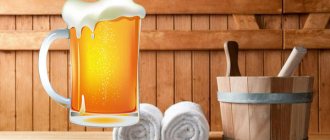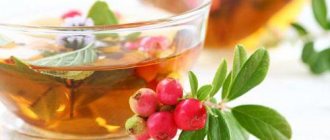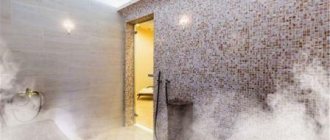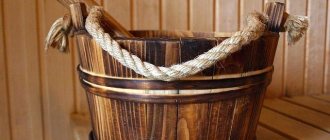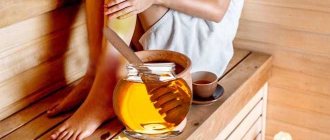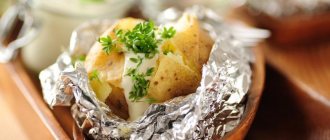In the bath, the body actively gets rid of harmful toxins, most of which come out through the skin. This happens all the time, but it is bath procedures that help speed up this process. At the same time, metabolism improves and immunity is strengthened. However, with increased sweating, the body quickly becomes dehydrated, which is why you need to drink something periodically. But there are also drinks that can harm your body.
Drinking regime in the bathhouse
Due to increased sweating, our body loses about 2 liters of water during the bath procedure, and this is its daily fluid requirement. Together with sweat, not only toxic substances are removed from it, but also beneficial mineral salts, and this can lead to a disorder of the water-salt balance, which is very dangerous for the body.
The state of health begins to deteriorate sharply even if more than 4 liters of water are lost. If 10% of body weight is lost, cardiac activity is disrupted, and if 20% of body weight is lost, irreversible changes occur in the body.
In order to avoid unnecessary loss of water during the bath procedure, it is necessary to follow a certain drinking regime. In between visits to the steam room, drink 2-3 glasses of liquid. This could be mineral water, juice or tea.
drink too much in the bathhouse , as this will create additional stress on the cardiovascular system and can lead to various disturbances in its functioning. This recommendation is especially important for older people.
If at the end of the bath procedure you still feel thirsty, do not rush to put a full kettle on the fire and start drinking tea. It will, of course, help you cope with thirst, but it will not bring much benefit to your health.
If you really want to drink, do this. Pour boiled water into a glass and rinse your mouth. After waiting 15-20 minutes, slowly, drink 150-200 ml of liquid in small sips. If thirst persists, wait another 2 hours and drink 1 glass of liquid again.
Purified drinking water
Water is a resource that is necessary for the full functioning of humans. It quickly restores the necessary supply of fluid and important elements in the body.
In addition, drinking water quenches thirst well, cleanses cells of waste and toxins, and improves the condition of skin and hair.
After bath procedures, you should not abuse mineral water, which is not always useful for people suffering from diseases of the genitourinary system, heart and blood vessels. Also, you should not use distilled liquid for drinking, which leads to the leaching of salts from the human body.
The bathhouse and sauna are a place where you can quickly improve your health and fully relax. And for a comfortable stay there you need tasty, healthy and high-quality drink. Then the bath procedures will have tangible benefits.
Drink beer in the bathhouse
Many bathhouse lovers prefer to drink beer and other strong drinks during periods of rest between visits to the steam room. This is fraught not only with the fact that you, for example, may find yourself instead of your friend in another city, as happened with the hero of a well-known film.
Alcohol puts a strain on the cardiovascular system and kidneys, not to mention the fact that under its influence the severity of reactions is dulled, and this is unacceptable in a bathhouse where you have to deal with hot water.
Chemical composition of tea
The advantage of tea over other drinks lies primarily in its chemical composition. Natural tea contains several hundred microelements that have a variety of positive effects. It is impossible to achieve such a composition artificially, and that is why it turns out that drinking tea after a bath is the best and most reliable solution.
Among the beneficial properties of tea are the following:
- Healing;
- Restorative;
- Anti-inflammatory;
- Astringents.
The degree of positive influence of tea on the human body is very high. Its use allows you to improve brain function, strengthen blood vessels and fill the body with various microelements - zinc, potassium, iodine, nickel, copper and a host of other substances.
Tea, among other benefits, is an active antioxidant. When it enters the body, it combines with any harmful substances, due to which most of the toxins are removed from the body. The maximum effect is achieved by combining bath procedures and tea.
Drink tea in the bathhouse
After a bath in Rus' they always drank tea with jam and honey. Oddly enough, this hot drink is very good at eliminating the feeling of thirst and cooling a hot body. The effects of tea will be much more effective if you add fresh lemon to it.
You can drink regular black tea in the bathhouse. It perfectly tones and refreshes, stimulates metabolic processes, and also contains vitamins, tannin, essential oils and other healthy components.
But at the same time, we should not forget that tea contains caffeine, and therefore drinking this drink in large quantities can lead to complications from the cardiovascular system, especially in older people.
What is better to drink after bath procedures?
Kvass is one of the most popular drinks that can be consumed after a bath. It perfectly quenches thirst and gives vigor after a hot steam room. Kvass is consumed chilled and has a spicy taste, thick foam and bready aroma. If desired, you can prepare it yourself at home.
Black bread is cut into cubes and dried in the oven until crispy. Place the crackers in a deep container and pour boiling water over them, leave for up to 3 hours.
Strain the bread wort into an enamel pan through a piece of gauze, add diluted yeast and sugar and cover with a clean towel. Leave to ferment for 14 hours.
The fermented mass is filtered into bottles, 3-4 raisins are added (per 0.5 liter container) and closed tightly.
The liquid is kept in the room for a couple of hours and then put away in a cool place.
For 5 liters of clean water: 500 g of crackers, 100 g of sugar, 10 g of yeast, 20 g of raisins.
Chamomile
Drink herbal infusions in the bathhouse
It is very useful to drink tea with various plants in the bathhouse , for example coltsfoot, chamomile, mint, St. John's wort, rose hips, oregano, etc. It is also good to add currant, raspberry and strawberry leaves to tea.
You can use decoctions of medicinal plants as an independent drink. They have an anti-inflammatory and choleretic effect, and in addition, contain many vitamins. If you have a cold, it is useful to drink a decoction of linden blossom, tea with honey or raspberries after a bath.
Just do not overuse these drinks, as they increase sweating, which is extremely undesirable after staying in the steam room, because the body has already lost a lot of fluid.
The role of water for human health
If you have health problems, if you want to strengthen your immune system and strengthen your body, take the “Water Healing” . With its help, you will get rid of many of your ailments forever.
Continue reading here
Read more about the Russian bath in my free book.
Invigorating berry juice
Cranberry juice is what you need when it comes to drinking after a bath. Cranberry juice contains vitamin C, which lowers body temperature. In addition, cranberries contain vitamin PP, which significantly affects immunity. You can also note good removal of toxins, lowering cholesterol levels and a preventive effect on blood vessels - cranberry juice has these qualities.
True, there is also a contraindication - such a drink is not suitable if you have an ulcer, gastritis or other diseases of the digestive system. Otherwise, everything is quite familiar - you can use both fruits and cranberry leaves to prepare the drink (a kind of tea is brewed from them).
If you like sour drinks with a pronounced berry note, then fruit drinks are the best choice. They are prepared from natural wild berries: lingonberries, cranberries, blackberries, strawberries - and contain a large amount of vitamins and beneficial microelements.
The record holder for the content of vitamins C and PP is cranberry juice. It normalizes blood pressure, relieves fever, quenches thirst, and improves immunity. In addition, cranberries are rich in flavonoids - natural antioxidants that protect the body from the effects of pathogenic microflora and prevent the development of malignant tumors.
Cranberry juice is a powerful tool in the fight against heart attacks, strokes and cholesterol plaques in the blood vessels.
Sbiten with St. John's wort
Cooking . Dilute honey in 1 glass of water and heat slightly. Then add the remaining water and cook for 20 minutes. 5 minutes before readiness, add _ spices and chopped dried St. John's wort to the drink. Let the finished sbiten brew for 15 minutes and drink it hot.
To prevent colds in the cold season, a drink made from green tea with the addition of dried rowan, dried raspberries and black currant leaves is well suited. All additives are crushed, combined with tea and brewed with boiling water.
Note : Sbiten has a long history. The first written mentions of sbiten and its recipes appeared nine centuries ago, but the drink itself is certainly much more ancient.
The main components of sbiten are honey, sugar, water and spices. But from ancient times it was customary to add various herbs to it to give the drink healing properties. Honey itself is a powerful healer; it contains vitamins B, C and PP. It is also rich in micro- and macroelements. It contains potassium, calcium, phosphorus, chlorine, iron and other minerals. The addition of medicinal herbs gives sbiten, in addition to its general health-improving properties, some narrowly targeted ones. Traditionally in Rus', St. John's wort, sage, elecampane, chamomile, mint, sweet clover, thyme, and oregano were added to sbiten. And the most commonly used spices were cinnamon, cloves, pepper, cardamom, ginger and bay leaf.
Knowing the principle of preparing sbiten, you can easily create your own, unique recipe for this drink, adding to it your favorite spices and medicinal herbs that are most beneficial for you.
Cranberry
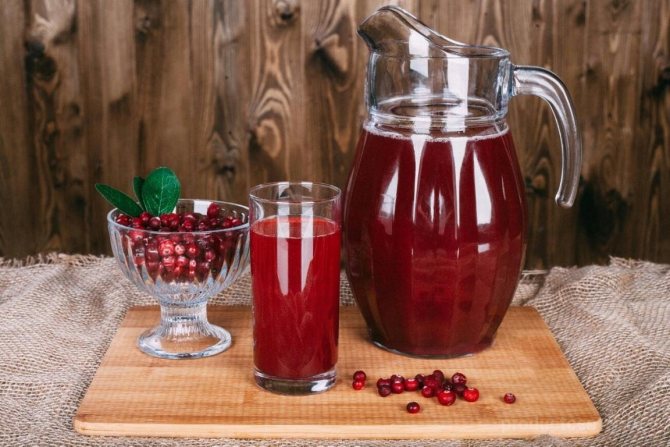
Cranberry kvass will not only normalize the fluid balance in the body, but also replenish the lack of vitamins, and also strengthen the immune system. To prepare this wonderful drink:
- Take 700 g of cranberries and mash with a fork until the berries release juice.
- Pour in 1.5 liters of water, bring to a boil and cool.
- Repeat steps from step No. 2 two more times.
- After this, dilute the cranberry liquid with 5 liters of boiling water and cool until warm.
- Add 600-700 g of granulated sugar (depend on your taste) and 26 g of live yeast.
- Mix well and distribute into bottles.
How to prepare kvass according to folk recipes
Of course, there are a great many ways and recipes on how to prepare kvass . Almost every self-respecting housewife (or owner) has her own and, in her opinion, only she has the best recipe. But still, the most common recipes for its preparation should be given.
- Preparation of malt for bread kvass.
- Kvass from crackers.
- Homemade and Petrovsky.
- Kvass “Sour cabbage soup”.
- Russian.
- White.
- Red.
- Mint.
- Northern.
Go to the selection of posts about recipes for making kvass.
For reference
According to the classification of the Beer Judge Certification Program organization, which trains and certifies judges for beer tasting competitions, kvass is a beer and belongs to the category “Historical, traditional, local beer.” In Russia, kvass is considered an independent (and national) drink.
Malt is a product obtained by germinating cereal seeds, mainly barley. The process of producing malt is divided into soaking and germination of seeds. Germination is necessary to cause chemical changes associated with this process in the seed.
- Wikipedia
PS Great video. How to prepare kvass.
Go to main article-content: How and what to drink in the bathhouse
Dear friends! If it’s not difficult, share it on these social networks with your friends. Thank you!
